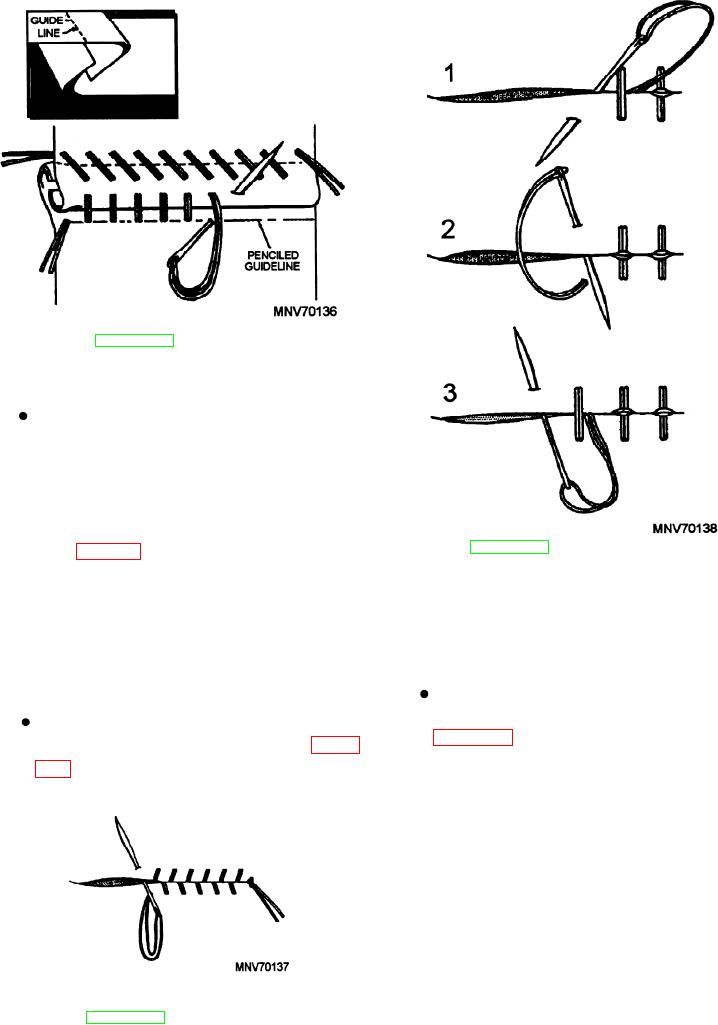
Figure 5-12.--Flat stitch.
Flat stitch. A flat stitch is used when a strong
seam is required, as on a paulin or a sail. Pencil a
guideline 1 1/2 or 2 inches from the edge of each
strip of canvas, depending on how wide you want
the seam. Crease each piece on a line slightly
less than halfway to the guideline. Make the
folds away from the guidelines and interlock the
Figure 5-14.--Herringbone stitch.
folds (fig. 5-12). Interlocking the edges forms a
watertight seam and keeps a ragged edge from
showing. Insert the needle at the guideline, and
stitch diagonally so that the stitches appear at
thread. Do not apply too much tension, however,
right angles to the seam on top but run at an angle
because this tends to pucker or draw the seam out
on the reverse side. After completing one edge,
of line.
tum the canvas over and sew the other edge of the
seam. Flat stitching also is used for patching.
Herringbone stitch. The herringbone stitch is
used to mend tears in heavy or painted canvas.
Baseball stitch. The baseball stitch is used to
Figure 5-14 shows the steps in making this stitch.
mend tears in light and medium canvas. Figure
As you can see from the picture, the herringbone
5-13 shows how it is done. Keep enough tension
stitch is very strong if applied correctly, as each
on the thread to remove all loops and slack
stitch locks itself as it begins the next.
Sewing Bolt Ropes to Canvas
by Hand
Bolt ropes are the ropes around the edges of
awnings and sails. Their purpose is to take the strain of
the stops, clews, reef points, and the like. To sew on a
bolt rope, hem the canvas and lay the rope along the
edge. Use a round stitch, the size of which is determined
by the size of the rope. Sew the rope to the canvas,
Figure 5-13.--Baseball stitch.
5-9

